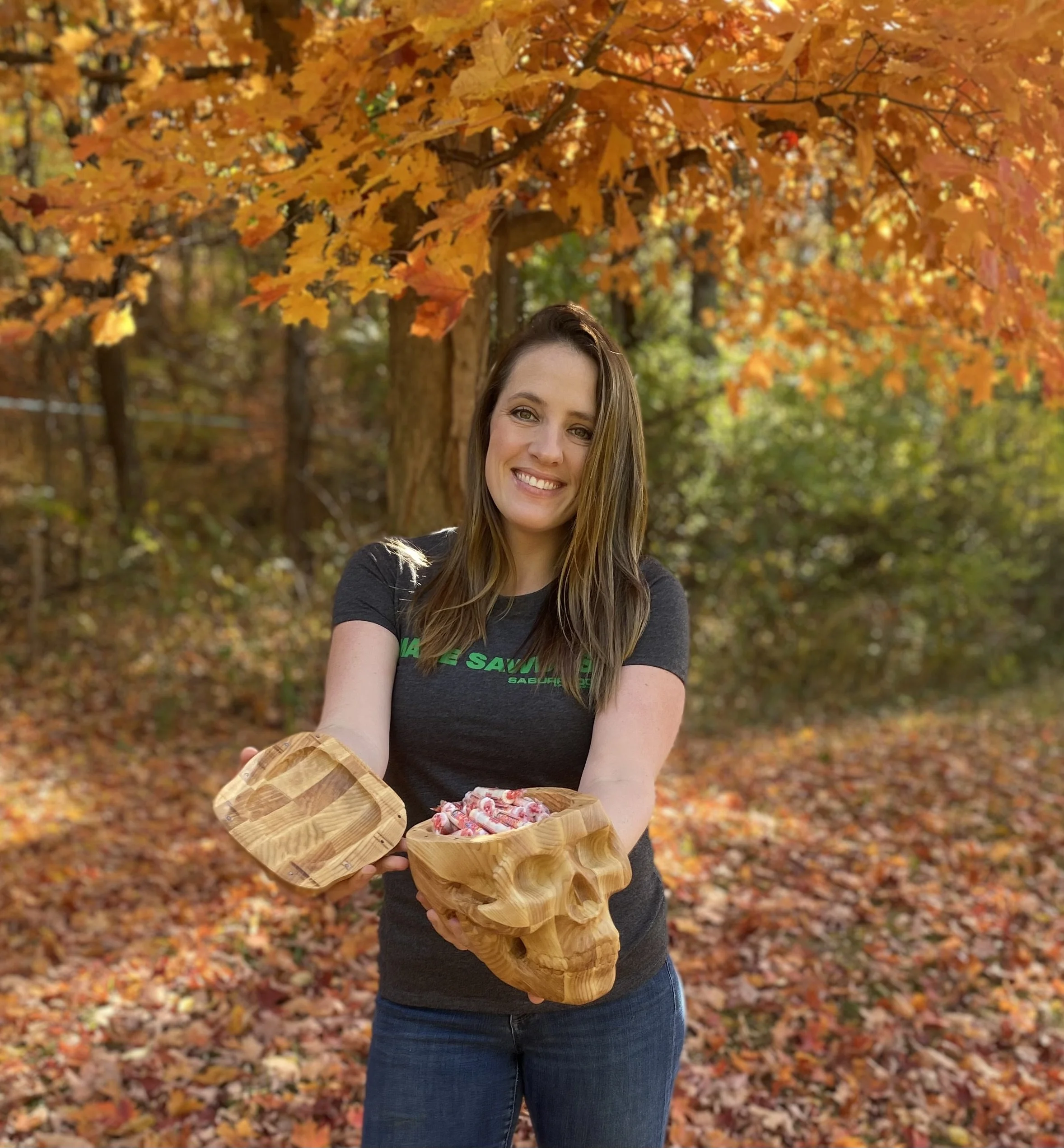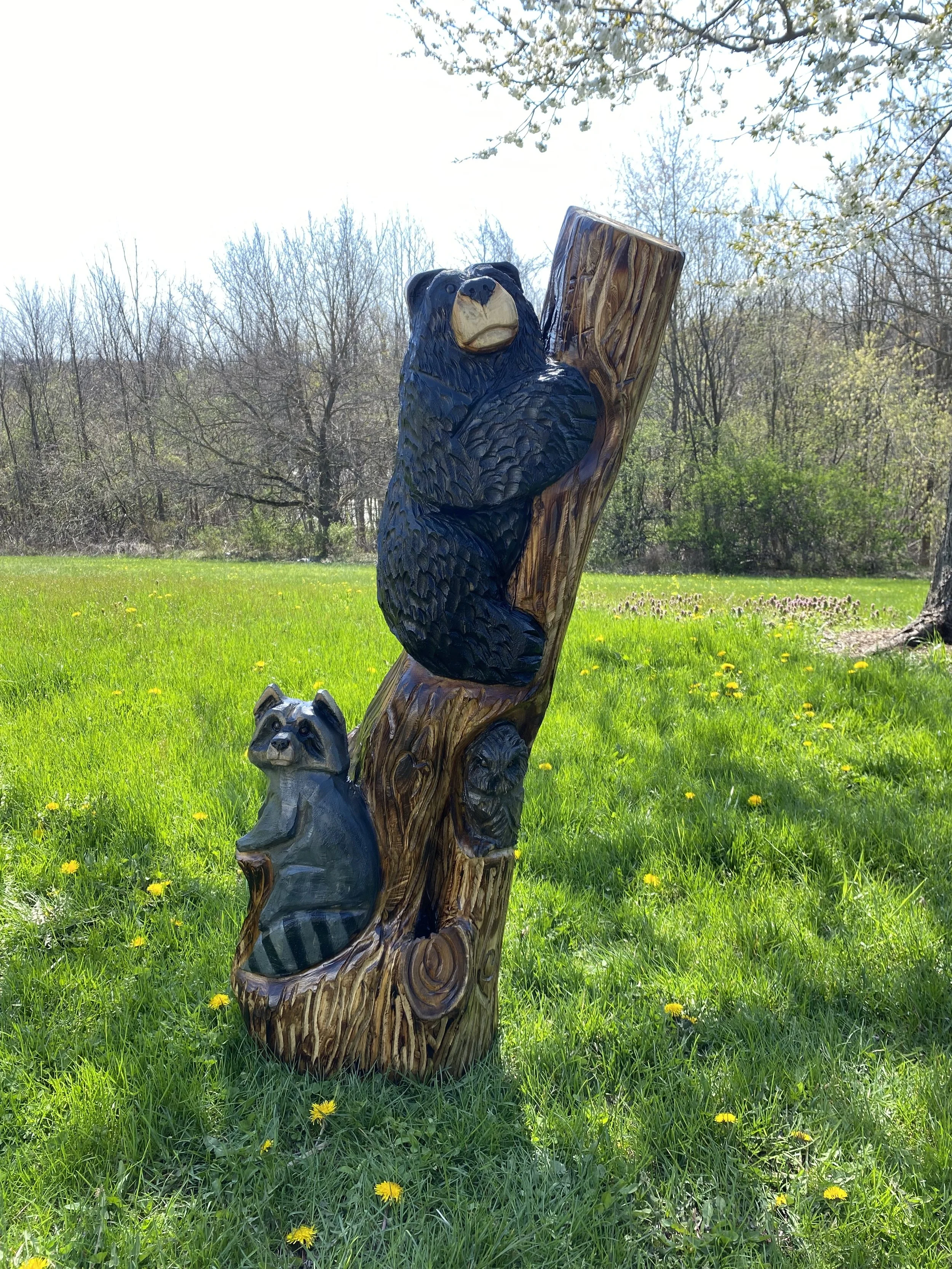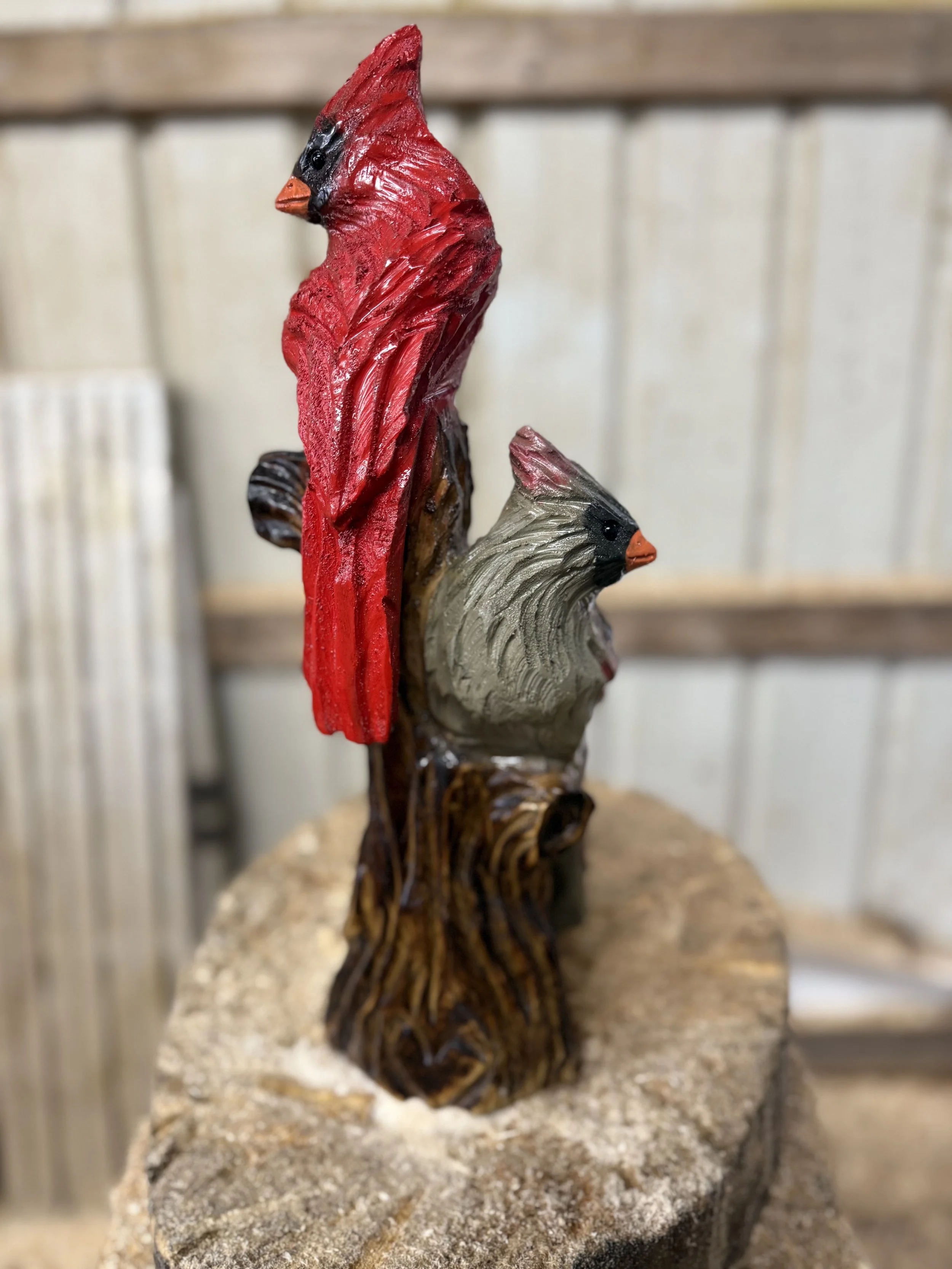Frequently Asked Questions
How can I purchase a carving?
The best way to browse my full selection of pre-made carvings is to visit me in person at one of the events I attend throughout the year. You’ll get the widest variety, see the details up close, and maybe even watch me carve live! Check out the Events page to see where I’ll be this season.
Not local or can’t make it to an event? Please reach out to inquire about available pieces or to start a custom order.
Do you do custom orders?
Yes! I’d be happy to work with you to create a custom piece. Please reach out with your ideas.
Can you be a vendor at my event?
I typically participate in about five events per year—that’s the sweet spot that allows me to balance carving with my full-time teaching career. While I’d love to say yes to every invitation, my time is limited and I have to be selective.
If you’re interested in having me at your event, I’d love to hear about it! Send over the details, and I’ll let you know if it’s something I can fit into my schedule.
My carving cracked, what should I do?
If you notice cracking or checking in your carving over time—don’t worry, it’s completely normal. I work with fresh, non-kiln-dried logs, which means they still contain natural moisture when I begin carving. As the wood dries and settles, it may develop surface cracks as part of its natural aging process.
These changes are part of the wood’s journey and add character to your piece. For tips on how to care for your carving, check out the Resources page.
Do you come to people’s houses to carve stumps?
Sometimes! I have some criteria that must be met for me to be able to come to your house for an on-site carving:
1. Height Limit: 6 Feet or Less - I don’t do heights. Period. If you’ve ever seen me on a ladder—or watched me navigate a sketchy hiking trail—you’ll understand why. For my safety and sanity, your stump must be no taller than 6 feet.
2. Wood Type: Not all trees are created equal when it comes to carving. My favorites are white pine, cedar, and catalpa. I also work with other softwoods like spruce, birch, and various pine species. Important note: I do not carve black walnut (thanks to a past allergic reaction), and I steer clear of hardwoods to protect my equipment—and my joints. If you’re unsure about your tree, feel free to reach out and ask!
3. Timing: Flexibility is Key. I’m a full-time teacher, and I also juggle festival prep and custom orders. That means my carving calendar fills up fast! Spring is typically the best season for on-site work, but I’ll do my best to coordinate with your schedule if you're flexible.
Where do you get your logs/are they sustainably sourced?
Every log I carve has already lived a full life as a tree. I source my wood from certified arborists who are hired by homeowners or property managers to remove trees for safety, landscaping, or other reasons. That means I only work with logs that have already been cut down—I’m not out there felling trees just to carve them. It’s a sustainable approach that gives these trees a second life as art.
How long does it take you to carve something?
This is hands-down the question I get asked the most—and the truth is, there’s no simple answer…I work in batches, which means I chainsaw several pieces before moving on to sanding and detail work, followed by painting and clear-coating. I don’t track how long each step takes—I just stay in the zone until the piece feels right.
I pour a lot of hours into my craft, but I also make time for the things that keep me grounded: hiking with my dogs and my husband, jogging, reading, and enjoying the outdoors. So while I can’t give you an exact timeline, I can promise that every piece gets the time, care, and attention it deserves.



